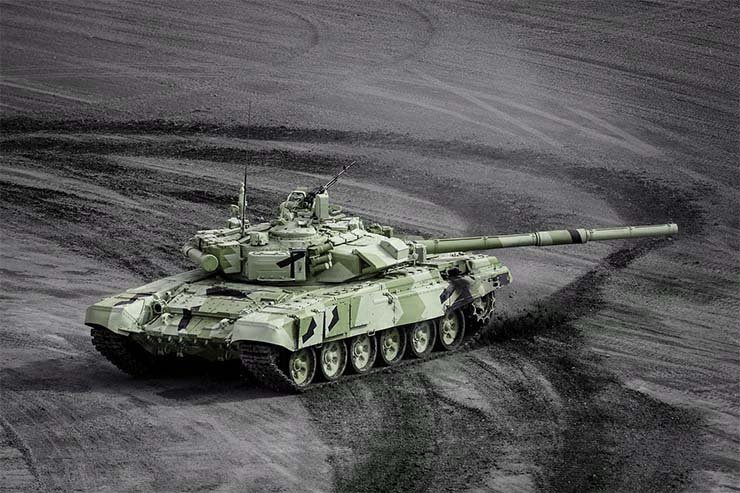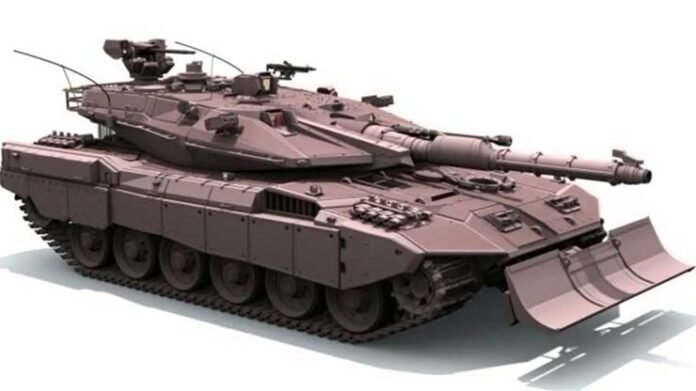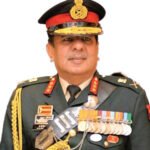If the tanks succeed, then victory follows…… Gen Heinz Guderian
Introduction: The Future Ready Combat Vehicle (FRCV) was given the AoN (Acceptance of Necessity) by the Defence Acquisition Council on September 3, 2024. Its approval entails the manufacture of 1,770 Futuristic Main Battle Tanks (initially 590), a landmark decision after years of conceptualisation and relentless efforts by the Indian Army. These tanks will replace the T-72 Mk1 Ajeya tanks, which have outlived their life and need urgent replacement.
The FRCV programme amplifies the Indian Army’s push for a modern battle tank with a robust and flexible base platform that can be adopted into a family of specialised armoured fighting vehicles. FRCV will offer multiple options for rapid operational employment enabling the Indian Army to execute operations across the entire continuum of conflict against diverse threats of the adversaries including nuclear.
The manifestation of this critical capability will be a game changer both on the northern and western borders, with its state-of-the-art technology. The FRCV project will also provide a unique opportunity for the Indian defence industry to come together and help to build research and manufacturing capabilities to foster technological spinoffs and develop an advanced systems manufacturing defence ecosystem.
Both Pakistan and China have modernised their main battle tanks, but FRCV will be much ahead in advanced technology and a game changer when employed along with the light tank to achieve combat overmatch.
Background
The production of the FRCV was planned under the Make Project in 2008-09, however, its turbulent journey swayed from a de-novo three-stage turnkey project outside the DPP in 2020, to MAKE 1 under the new DPP 2016 evolved to SP (Strategic Partnership) model, and thereafter, under Make and IDDM of the present DAP. Accordingly, commencing 2015, multiple RFIs were floated by Service Headquarters, the last being in 2024. While the May 2021 RFI was issued and ‘In Principle Approval’ given, the AoN was granted by the Ministry of Defence only on September 3, 2024. The Indian Army is likely to issue a request for proposal (RFP) this year for a project of approximately Rs 60,000 crore to manufacture 1,770 future-ready combat vehicles (FRCVs) in India under ‘Buy Indian – Indigenously Designed, Developed and Manufactured’ i.e. Buy Indian-IDDM.
The Need
The long-term perspective of fleet management guides the vision for combat vehicles. The endeavour to keep the tank fleet in a 30:40:30 technology profile (30 per cent state of the art; 40 per cent contemporary; 30 per cent nearing obsolesce) guides the effort of enhancing the current force and enabling the future force. The framework accordingly focuses on a balanced approach to sustain the present fleet, modernisation of legacy fleet to contemporary standards and induction of next-generation platform in a time-sensitive domain.
The FRCV as the next generation main battle tank is to replace the vintage T-72 Tank Fleet (in service since 1979), which was inducted in 1979 and last produced in 2009. The present T-72 has progressively gone beyond its service life. The T-90 has replaced the initial fleet of T-72, but the production of approximately 1,770 tanks, though upgraded, is not cost-effective and poses an operational risk due to obsolescence.
If optimistically inducted in 2030, FRCV will probably replace the entire fleet of 1,770 T-72 by 2045 with a known production capacity of 100-120 tanks per year. Thus, the time and operational expediency, the Ministry of Defence intends to procure 590 FRCVs in the first phase, which will allow both a field force employment review as also the desired upgrades to keep its technology state of the art.
Besides, with the modernisation of tanks by both Pakistan and China, FRCV will be much ahead in advanced technology and a game changer when employed along with the light tank to achieve combat overmatch.
The naysayers of the project profess the ‘Obituary of the Tank’, but in the Indian context, tracks and boots on the ground will remain primary. However, in the tank versus anti-tank competition, tanks must evolve and adapt to meet the challenges in operational environments.
The Capability Matrix
The broad technical parameters under the project brief optimise lethality, agility, survivability, connectivity, sustainability and indigenous character. The FRCVs, with a weight categorisation of around 55 tonnes and a high power-to-weight ratio of 27:1 HP/Tonne, will have a crew of four. It will have strategic, operational and tactical mobility to operate under diverse terrain conditions. Its armament includes a 120mm or higher calibre main gun with the state of art ammunition, including tube missile firing capability both against ground targets and helicopters. It will also be equipped with a secondary armament and anti-aircraft/ drone gun. It will be equipped with cutting-edge technologies such as artificial intelligence (AI), drone integration, advanced survivability suites including active protection systems, state of art fire control systems, battlefield management systems, beyond line-of-sight strike capability, advanced communication, state of art optoelectronics, electronics and enhanced situational awareness. Additionally, features like manned-unmanned teaming capability and seamless integration into network-centric warfare environments will enhance the overall operational effectiveness index of the Indian Army by catering for emerging threats in varied terrain.
The Process
A main battle tank is a system of systems and is a fusion of apex technologies existing in the realm of land systems. Post the AoN, an Expression of Interest (EoI) outlining the specific requirements and technology will be issued and responses evaluated. After the response evaluation, an RFP – Request for Proposal – will be issued by the Army based on which two Development agencies (including Private Industry) will be selected under the ‘Make’ category for prototype development. This would result in acquisition post-trials, technical evaluation, price indexing and technology mapping. Based on sanction orders will be placed (590 FRCV) from a successful Development Agency (s)/ (DA), through the ‘Buy Indian-IDDM’ category with Indigenous Design and Development and a minimum of 50 per cent Indigenous content at the start. Indigenous content and technology mapping will be key issues.
The procedure will take 3-6 years and the induction with optimism will commence around 2030.

The Challenge
There are several challenges, yet all are surmountable as they remain more cultural, bureaucratic lethargy, parochial or siloed in service mindsets.
The nays of the project profess the ‘Obituary of the Tank’, citing the era of cheaper killer drones and quoting the Ukraine-Russia war. Let me remind them that in our context, till the time we have disputed and turbulent borders, tracks and boots on the ground will remain primary. Further, if you take out tanks from the Ukraine war and Israel’s offensive against Hamas, the front lines would have been very different. Yes, in the tank versus anti-tank competition, tanks will have to evolve and adapt to meet the challenges of varied threats and operational environments. It is an era of combined arms warfare Integrated Battle Groups (IBG-Indian Context) with a surface-to-space continuum and interdependence not just integration among tri-services. Besides a tank is as good as the tankman, and technology, tactics and training must keep pace.
The FRCV is a project of national importance that must not allowed to fail or go the ‘Arjun’ way. Its manifestation will not only ensure giving teeth to India’s deterrence but also will result in combat overmatch if unleashed. May the project progress in the spirit of ‘Nation Above All’.
Another lobby is the Arjun emotional lobby. The utility of equipment is a factor of Employability, Deployability and Capability. Unfortunately, the Arjun tank does not meet them in the Indian operational environment context. The Arjun MK series of tanks do not meet the operational requirements of the Indian Army due to multiple shortcomings like restricted employment due to weight and mobility, large dimension visibility, indigenous content, poor quality control, lack of MRO efficiency and cost factors. At best its technologies can be used for upgrades of the present fleet and lessons of its cocooned development process not repeated for FRCV.
The capability of the private defence industry to make FRCV a reality and its limitations a legacy past. The light tank stands as an example as do indigenous engines (1500 HP), survivability suites, gun tubes and ammunition which have either been indigenised or evolved from indigenous character. The big sharks must not eat away the small fish in the market but must collaborate and encourage as the stakes of a defence ecosystem for major equipment are higher than individual players.
Conclusion
The FRCV is a project of national importance that must not allowed to fail or go the ‘Arjun’ way. Its manifestation will not only ensure giving teeth to India’s deterrence but also will result in combat overmatch if unleashed. May the project progress in the spirit of ‘Nation Above All’.
-The author, a decorated Indian Army veteran was heading the team which conceptualised and progressed the FRCV project and post-retirement, he was Consultant Combat Vehicles (MoD) – OFB for 2 years.
The author, a PVSM, AVSM, VSM has had an illustrious career spanning nearly four decades. A distinguished Armoured Corps officer, he has served in various prestigious staff and command appointments including Commander Independent Armoured Brigade, ADG PP, GOC Armoured Division and GOC Strike 1. The officer retired as DG Mechanised Forces in December 2017 during which he was the architect to initiate process for reintroduction of Light Tank and Chairman on the study on C5ISR for Indian Army. Subsequently he was Consultant MoD/OFB from 2018 to 2020. He is also a reputed defence analyst, a motivational speaker and prolific writer on matters of military, defence technology and national security. The views expressed are personal and do not necessarily carry the views of Raksha Anirveda






